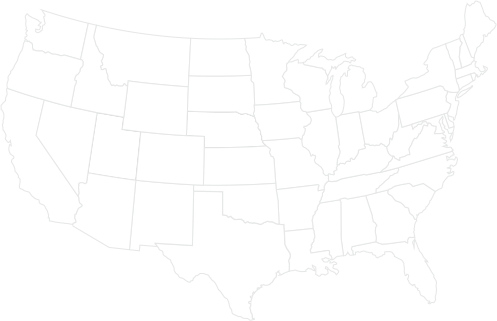Sourcing, Handling and Feeding Whole Cottonseed for Beef Cattle
• Posted in Articles
Beef producers may be passing up a nutrient-dense, available and affordable feedstuff in whole cottonseed (WCS). Known for its triple-nutrient composition of fat, fiber and protein, dairy producers have been leveraging this valuable feed ingredient for decades.1 Now, beef producers are realizing the benefits it can provide their cattle as well.
“The majority of the WCS supply goes to dairy rations but, as acres increase, more beef producers have more opportunities to use the feed ingredient on their operations,” said Tom Wedegaertner, director of cottonseed research at Cotton Incorporated. “Cotton byproducts are not new to feedlots in cotton-growing regions, but producers now have the data to prove they can perform in feedlot rations.”
While requirements for beef and dairy diets differ, new research has proven WCS’s effectiveness in feedlot rations.2 Plus, busy rail lines are constantly moving WCS throughout the country, making it affordable and easy to obtain for beef producers nationwide.
Why WCS Should Be Considered in Beef Diets
- Nutrient dense: On average, WCS contains 96% digestible nutrients, 23% protein, 20% fat and 24% fiber on a dry matter basis.
- Cost competitive: Commodity prices are never guaranteed but, pending the current year’s availability, WCS may be a more competitive feed source during key seasons like winter when grazing is not always available.
- Scientifically proven: A recent study found cotton byproducts, including WCS and cotton gin trash, are an effective source of fiber, fat and protein in feedlot rations without adverse effects on performance or carcass characteristics.2
Sourcing WCS
While cotton is grown primarily in the South, a robust distribution system makes the movement of WCS very feasible to ranches and feedlots throughout the U.S. As a byproduct of the ginning process, the feedstuff is readily available so, depending on price, producers can choose to store short- or long-term volumes to maximize their investment.
Sourcing WCS is direct and simple with Cottonseed Marketplace, an easy-to-use connection point for buyers and sellers. You can request a customized quote based on your unique specifications or contact qualified sellers in your area directly.
Handling WCS
The handling of WCS is often a deterrent for many producers at first glance because it can’t be stored in bulk bins or run through augers. However, there are many advantages the feedstuff can offer your operation, such as:
- No on-farm processing required.
- No specialty equipment needed for feeding. Front-end loaders and buckets work great.
- Covered storage, such as a commodity shed, is sufficient for storage.
- It can be hauled and stored in a gravity wagon.
- It can last multiple years if stored properly.
Combustion and hot spots are another common concern, but as long as WCS is stored properly and below 15% moisture, those risks are very low.
If handling is the primary sticking point for producers, EasiFlo™ cottonseed is a great alternative option. It’s lightly coated in a cornstarch mixture to make a hard, durable coating that seals the lint. This allows it to flow freely and auger through traditional grain handling equipment while maintaining the same nutritional benefits as standard cottonseed. EasiFlo can be transported in hopper-bottom trucks or railcars, conveyed using existing conveying systems and stored in overhead bins.
Feeding WCS
WCS offers fat, fiber and protein in one nutrient-dense feedstuff. While the fat content increases the energy value and can have positive effects on female reproduction, it can also be too much of a good thing. Excess fat can negatively affect rumen function, so beef cattle diets should contain no more than 4% fat to maintain rumen function. Therefore, Alabama and Auburn Extension recommend feeding no more than 6 to 8 pounds of WCS per mature cow, per day.3 It can also be an attractive feed supplement in stocker cattle, but at slightly lower rates.
Gossypol toxicity may be one of the most well-known objections to feeding WCS. While this still should be taken into consideration, Upland varieties of cotton contain much less gossypol than other varieties and account for the vast majority of cotton produced in the U.S.4
Feeding WCS on beef operations offers producers a nutrient-dense option that is readily available in many leading cow-calf and stocker states. While concerns such as fat content, gossypol and handling challenges should be recognized, these objections are overcome quickly for many operations. Handling and feeding WCS requires a shift in thinking but can prove to be a simple feedstuff to store if kept dry.
Interested in adding cottonseed to your cattle’s diet? Learn more about the feedstuff or find a seller near you.
1Kellog, D. W., J. A. Pennington, Z. B. Johnson, and R. Panivivat. 2001. Survey of management practices used for the highest producing DHI herds in the Unites States. J. Dairy. Sci. 84:E120– E127. doi:10.3168/jds.S0022-0302(01)70206–8
2Warner, Andrea L, et al. Effects of utilizing cotton byproducts in a finishing diet on beef cattle performance, carcass traits, fecal characteristics, and plasma metabolites. American Society of Animal Science, 4 Feb. 2020, doi:10.1093/jas/skaa038.
3Stewart, Lawton, and Johnny Rossi. “Using Cotton Byproducts in Beef Cattle Diets.” Soil & Crop Sciences, Texas A&M University, cottonpickin.tamu.edu/General%20Production/Georgia%20Cotton%20Byproducts%20for%20Beef%20Cattle%20B%201311_2.pdf.
4Mullenix, Kim, and Darrell L Rankins. “By-Product Feeds for Alabama Beef Cattle.” Alabama Cooperative Extension System, Alabama A&M & Auburn Universities, 18 Sept. 2018, www.aces.edu/blog/topics/beef/by-product-feeds-for-alabama-beef-cattle/.

